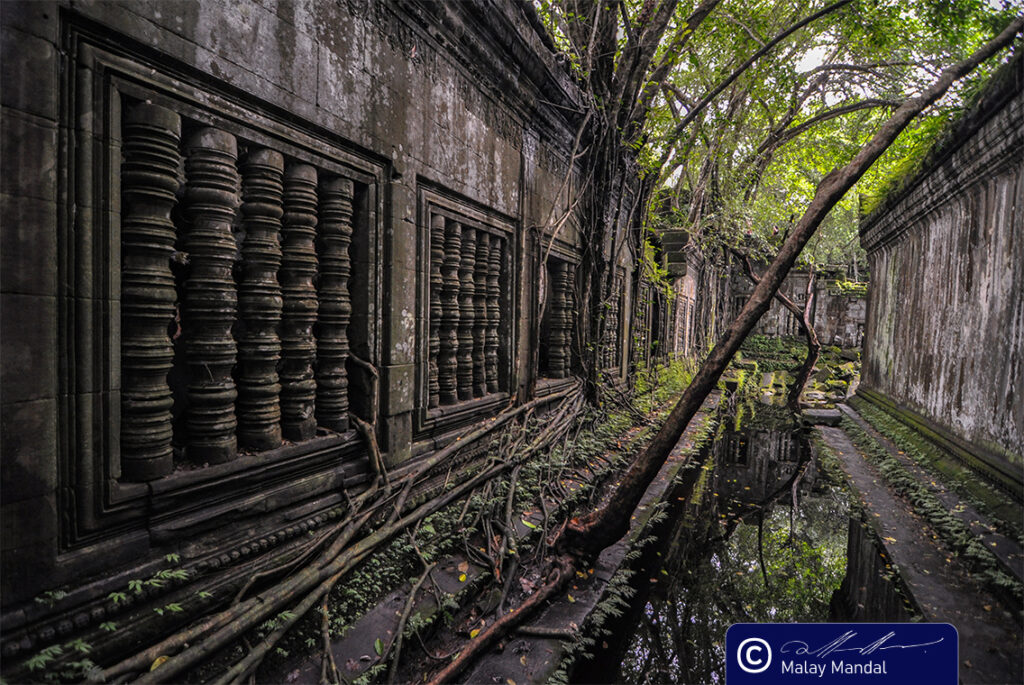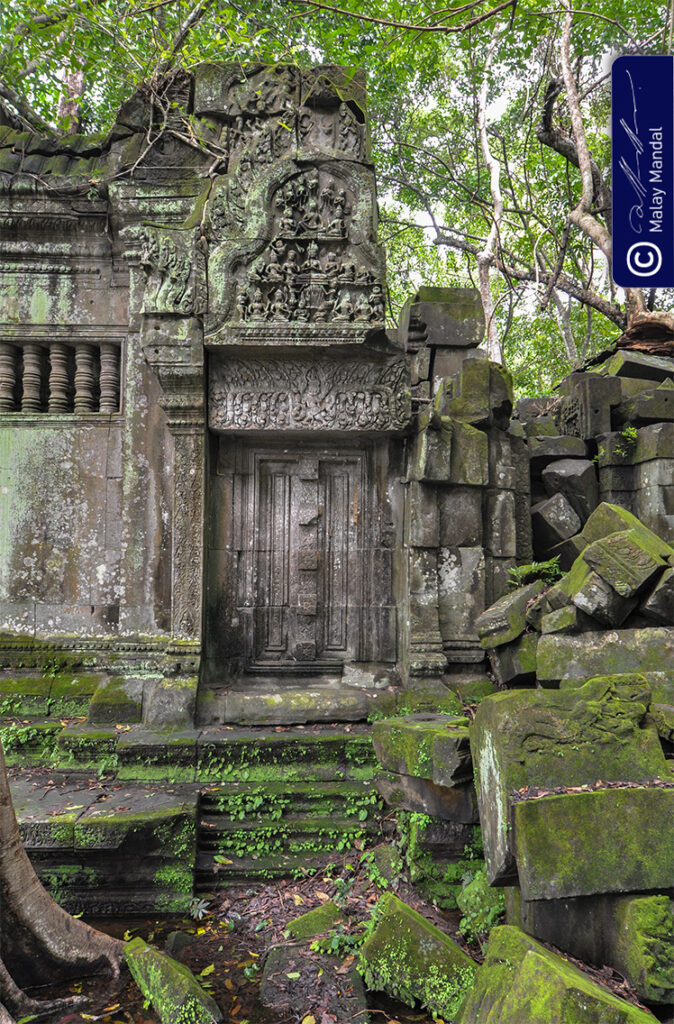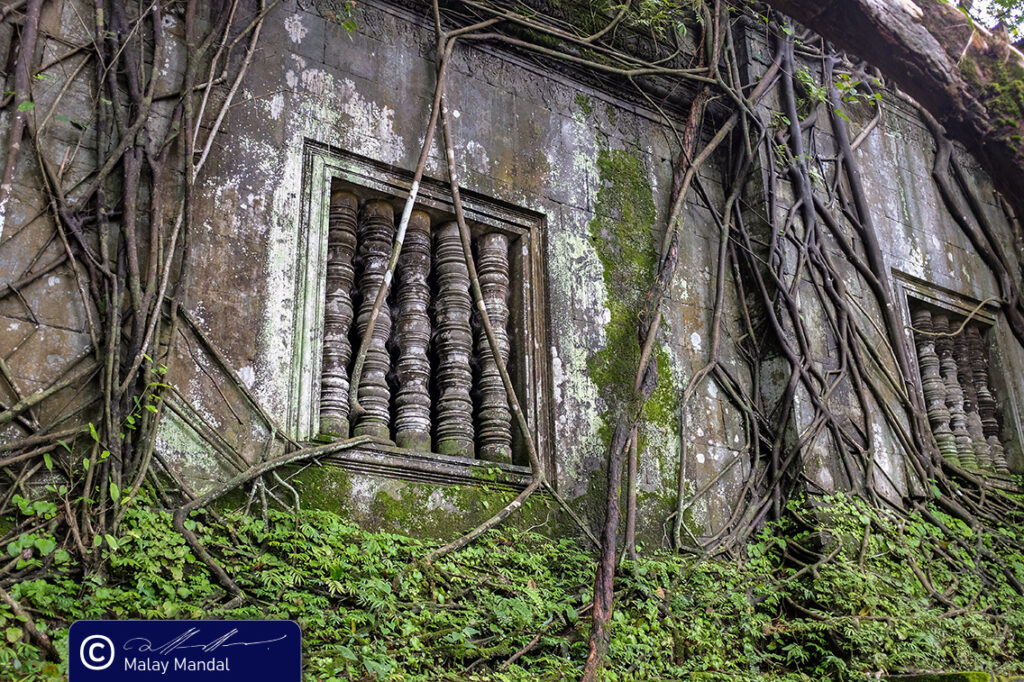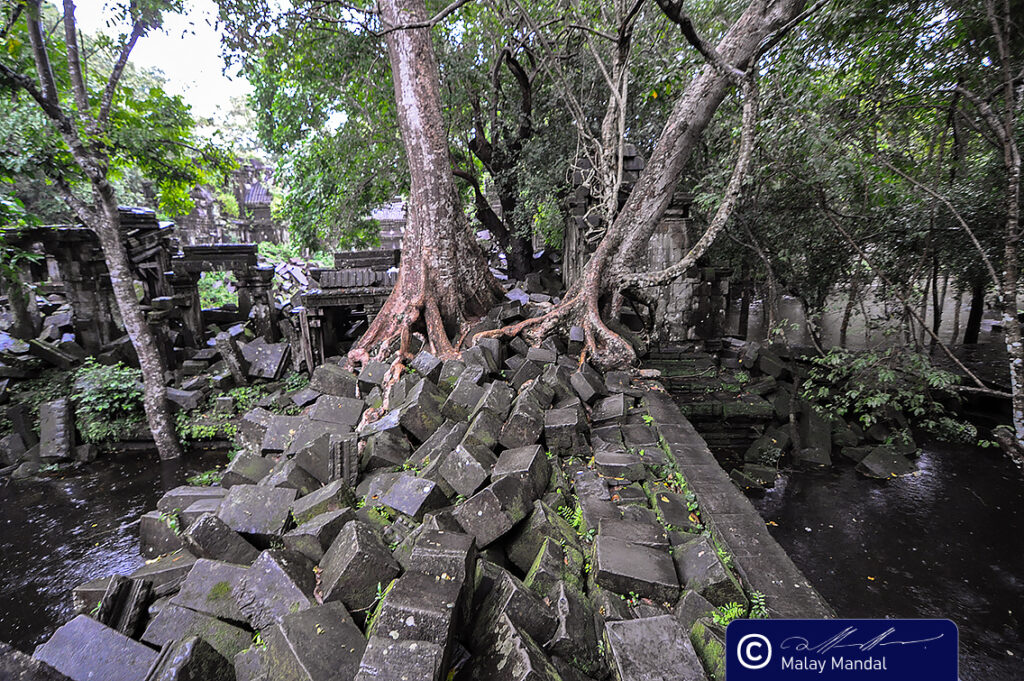


To put it plain and simple, if Maugham felt “no one should die before seeing Angkor!” then your trip to Angkor is incomplete without experiencing Beng Mealea. Remember this temple is not only to be seen but experienced. Built during the reign of Suryavarman II (r. 1112-1152 CE), this grand temple complex occupied centrestage within an imperial city (now lost) that held a strategic location along an old highway between Angkor Wat and Preah Vihear.The resemblance of ground plan between this temple and Angkor Wat further supports its stature amongst the galaxy of Khmer temples. So, is this all that makes Beng Mealea a must visit destination? Not exactly, it is instead the present state; abject dilapidation, absolute neglect and completely taken over by forces of nature.



Beng Mealea is still under the forces of nature with roots driving deep into the masonry and vegetation doing its best to hide the human imprints. The temple is only partially cleaned and navigable on limited patches. A wooden platform made during the filming of “Two Brothers (2004)” remains the only safe and reliable option while the adventurists are likely to unveil a few uncharted territories. Yes! It’s really possible to slide into some of the fallen chambers and get a glimpse of the glorious splendor. George Groslier visited Beng Mealea in 1913 CE; he wrote, “For the past fourteen days I have wandered devastated Beng Mealea. I am perpetually scampering up toppled structures, leaping gymnastically from stone to stone to reach interesting spots, standing erect to sketch and scribble accounts, pushing apart the brush, whose thorns catch on my clothes, the laces binding and trip up my feet. I am a broken man. Every evening I must pluck off the ticks, which swarm in the moss and rotten wood.”




Groslier adds, “The nights are full of strange sounds. A panther made off with a cage of chickens yesterday under my sala. It is no use trying to convince yourself that there is no danger, that panthers never climb into huts, that they flee at the least sound. You still never quite sleep soundly with such cruel beasts on the prowl nearby. All these circumstances amount to a state of excessive excitement, enhanced by fatigue and fed by solitude.” By the middle of the 20th Century, situation was largely the same. Maurice Glaize who worked extensively for conserving many temples in Cambodia left us with a description from 1944 CE. He remarks, “A trip to Beng Mealea, which in itself demands an entire day, can be combined with a hunting party, since the region is rich in both small and large game and wild animals; – tigers, panthers and elephants, herds of oxen and wild buffalo inhabit the forest as far as Prah Khan of Kompong Svay in the east.”


Practicalities | The current entrance is on the southern side reached through an esplanade. The main pathway curtails unexpectedly at a huge stockpile of loose boulders of varying size – both carved and unfinished. Five-hooded Nagas that once adorned the railings are littered over the place. The passage glides eastwards to arrive at a make-shift entrance. Here two types of exploratory trails are available; the flat one runs over the wooden bridge made for the movie “Two Brothers,” while the other, more adventurous option includes rigorous hiking (understandably more rewarding). With growing inflow of tourists, Beng Mealea has developed into a full-fledged tourist destination with decent places to eat. Combining Beng Mealea with Banteay Srei and Kbal Spean (if possible) is a good idea.




